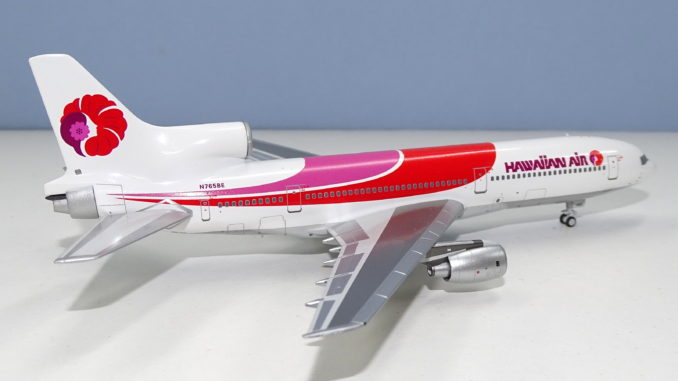
Last month the moment so many of us had been waiting for finally arrived, as the first NG Models Tristars hit the stores. It goes without saying that I have not been overly impressed with any other Tristars on the market at present, not out of bias, but simply because they aren’t very good when you actually look at them. Having checked out the samples of the NG Models mould I knew the actual releases would be brilliant and pleasingly NG Models have made the improvements that were requested. How does the whole package stack up? I think you know, but let’s take a closer look.
THE REAL THING
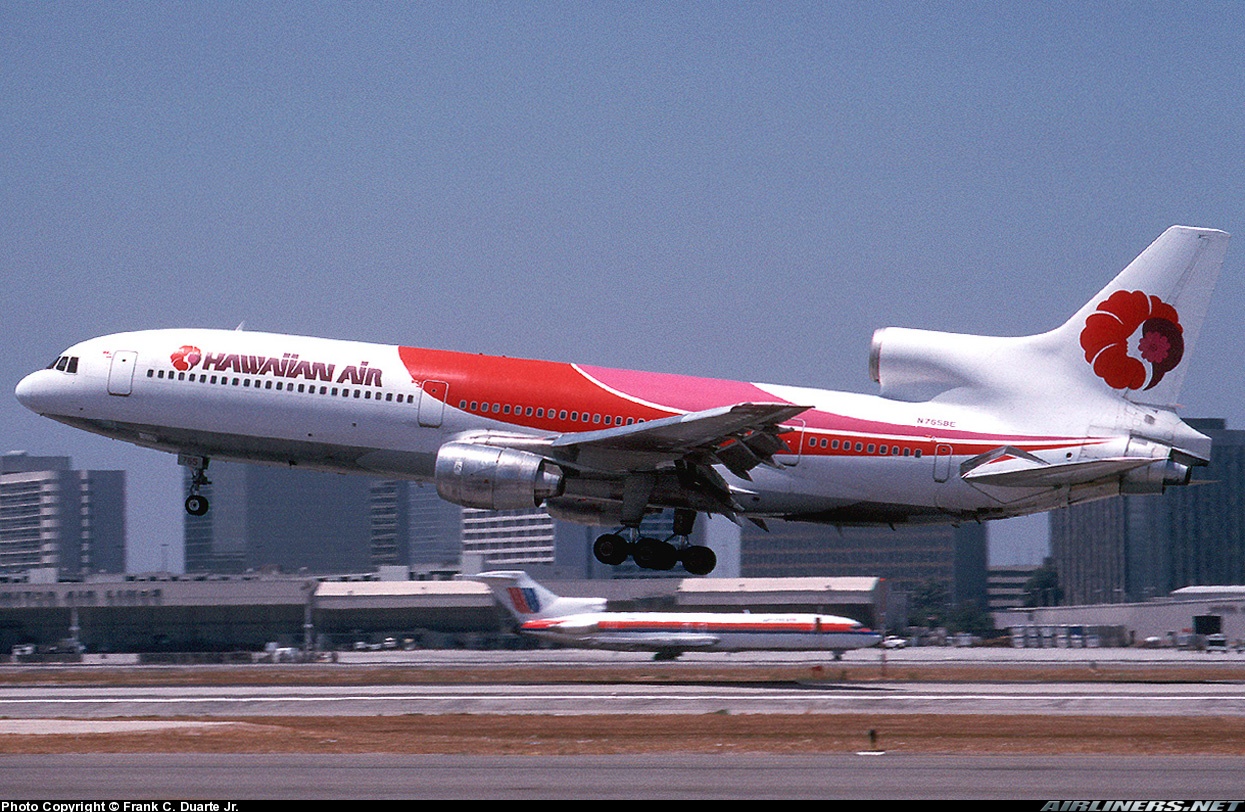
In the regulated era Hawaiian Airlines had only been licensed to operate scheduled services throughout the islands of its home state, and although it had owned DC-6s at times these had only been used for longer hops when operating, mainly military, charters. Deregulation in 1978 changed everything and Hawaiian, fearful of losing market share to mainland carriers, decided it would need to expand outside of Hawaii to survive.
This was a two-prong affair, which included not only the acquisition of DC-8s, for charters and scheduled services into the Pacific, but also five Lockheed Tristar 1s, for the inauguration of scheduled services to the US mainland for the first time.
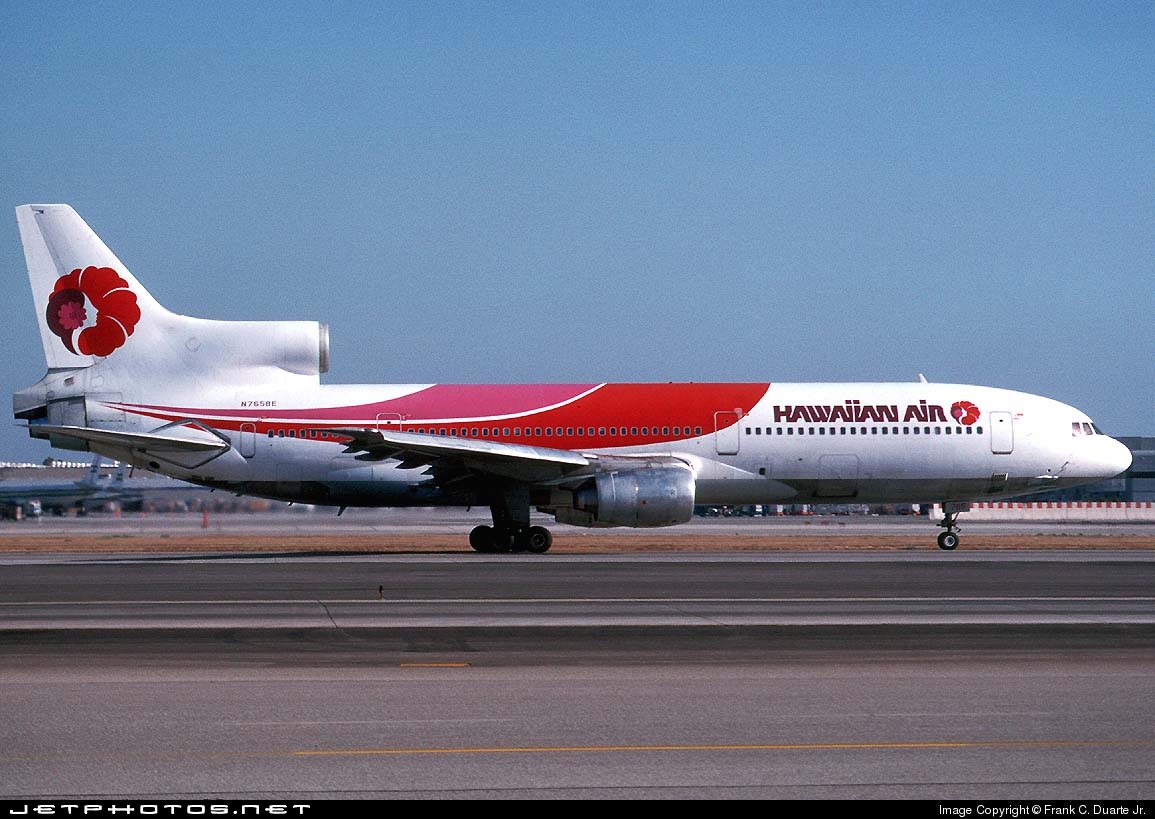
The Tristars were all ex-All Nippon aircraft built in 1974/75, which had been traded in to Boeing in exchange for new 767s. They were registered as N762BE-N766BE and began to join Hawaiian in the second half of 1985. The first service was flown on June 12 to Los Angeles. As the trijets arrived service was expanded to San Francisco, Seattle and Portland with increased frequencies.
Hawaiian also expanded its Pacific network to spread as far as New Zealand and Japan, while the Tristars and DC-8s could be seen on worldwide charters. Nevertheless, the expansion into new international and mainland markets was not without significant risk and by 1990 Hawaiian was in trouble. Despite strong improvements in on-time performance and operating efficiency the long-haul services were not profitable due to strong competition.

The crisis in the Middle East, that led to the first Gulf War, sent fuel prices skyrocketing at the same time demand for air travel collapsed. The airline continued to lose money into 1992 when Hurricane Iniki struck Kauai, doing even more damage to the balance sheet. The international network was heavily pruned and the DC-8s shed, although the Tristar fleet actually grew slightly. Eventually Hawaiian was forced into bankruptcy protection on September 21, 1993.
The end result was a partnership with American Airlines, which amongst other changes included the lease of 5 DC-10s from AA, which were to replace the L-1011s. The DC-10s began joining in February 1994 and spelled the end for the Tristars. Most were returned to the lessor and found a new home at the charter airline Rich International. This aircraft, ex-JA8511 with All Nippon, was retired in May 1994 and stored for nearly a year before joining Rich with the same N registration.
She operated with Rich until 2000. In 2002 she was sold to Cuda Rey investments but was broken up in 2004. The aircraft is most famous not for her airline service but for the short period in 1990 when she was repainted into the fictitious colours of Northeast Airlines for use in the action movie Die Hard 2. As flight 140 N765BE was the aircraft, which John McClane’s wife was aboard, that almost ran out of fuel trying to land at Dulles on Christmas Eve.
THE MODEL
The format for my reviews is to split them into three key areas:
- The mould of the aircraft
- The paint and livery
- Printing and quality control
Each can get a maximum score of 10 for a section giving a maximum combined total score of 30.
THE MOULD
I was fortunate to be able to review the NG Tristar sample models back in April and at the time it was clear they were very good. Therefore, my detailed review of the sample models still stands although there have been some improvements made.
To summarise what I said previously, this is the first Tristar mould to accurately portray the dolphin like nosecone of the type. Nobody else has come close to this level of accuracy, which is evident throughout the entire mould. Nowhere is this clearer than at the tail region, which is beautiful.
All previous moulds make some errors at the tail, whether it is the size and shape of the no 2 engine intake (Blue Box, Lockness, Witty Wings) or the detailing and shape of the exhaust (old Gemini, Lockness, Dragon Wings). The NG is alone in getting the entire region accurate and the finish and fit of the engine intake cone and the exhaust pieces is the icing on the cake.
The wings are well angled and very well detailed as is the wing/fuselage join and fairing. One area of the sample models that did require attention was the engine pylons and NG have been true to their word and redesigned them, so that they accurately hang the engines higher than they did previously. Even better the pylons are one piece, unlike the JC Wings / Gemini mould, and correctly join to the front of the engine (unlike the Lockness).

Another area of major difference between the NG and the other extant Tristar moulds is the landing gear. It is taller than both the JC Wings / Gemini and the Lockness moulds and much better for it. It may even be half a mm too tall but it certainly looks a lot better than the way too short gear on the competition. You could also argue that perhaps the maingear doors aren’t quite angled correctly but again they are lightyears ahead of the competition.
It has been a long time coming but finally 1:400 has a definitive Tristar mould. In the detailed review of the two other Tristar moulds I wrote, the JC Wings / Gemini scored 29 and the Lockness 24 out of 40. A quick scoring using the same criteria for this mould gets it a 38/40, which surely by my scoring criteria for these reviews is effectively full marks.
SCORE – 10
PAINT & LIVERY
The Pualani ‘flower of the sky’ livery has been the endearing logo of Hawaiian since 1973 and although the airline has gone through multiple liveries they have all featured some version of the original concept, which was one of many classic schemes designed by Walter Landor & Associates.
Sweeps of red and magenta streamline the all-white fuselage drawing the eye to the Pualani symbol on the tail. The symbol is a clever combination of the Hawaiian state flower, the Hibiscus, and a profile of a native girl with a flower in her hair. HAWAIIAN AIR is written in a characteristic unique wordmark.
To my eyes the fuselage base colour of this scheme has always looked off-white but I’ve been reliably informed by everyone I’ve asked about this that I am wrong. Either way the base colour matches the photographs, as does the red and magenta. I have come to expect faultless livery application from NG Models and this model doesn’t fail to deliver.
SCORE – 10
PRINTING & QUALITY CONTROL
The Lockheed Tristar represents a real challenge in terms of printing since it has a rather unique layout of doors plus unusually shaped cockpit windows. It is the latter, which have proven a major dealbreaker for me with all the other recent Tristars, but NG has the shape correct and is no doubt assisted by having the correct nose shape to sit them on top of.
Other printing is incredibly detailed, especially at the rear of the fuselage where some of the finest printing ever to adorn a 1:400 scale model has been achieved. The only issue I can identify is very minor in that the nosegear doors aren’t quite printed in the centre of the fuselage. They are offset to starboard by the tiniest margin.
I have seen several NG Models Tristars that didn’t arrive at their new owners in one piece but I have to say none of my 3 had any parts that weren’t firmly attached. I have received NG Models 757s with detached nosegear and wings before but not in any greater quantity than from other manufacturers. Anyway, this model is perfectly built.
SCORE – 10
CONCLUSION
NG Models have clearly set a new standard in this scale and in the process attracted the ire of several other manufacturers and a few snide remarks. For me they have re-energised the scale and the models simply speak for themselves. They almost make reviews like this superfluous and lead me to question scoring the models only out of ten for each category. If I was nitpicking I could potentially knock a small amount off at the mould and print level but it doesn’t, to my mind, add up to a whole points worth and so once again NG have managed a perfect score. I just hope that now they have so many moulds on the market that they give their Tristars the attention they clearly deserve and get to releasing a lot more.
FINAL SCORE – 30

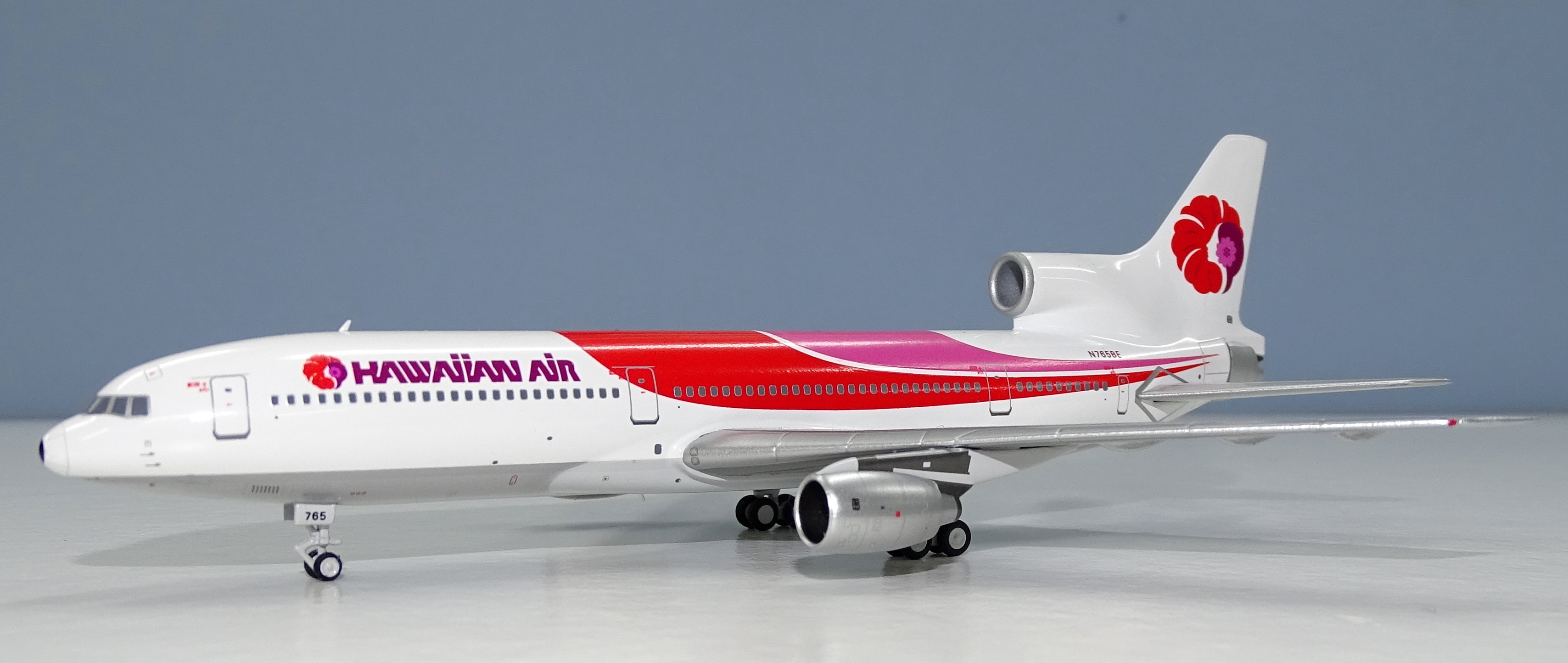
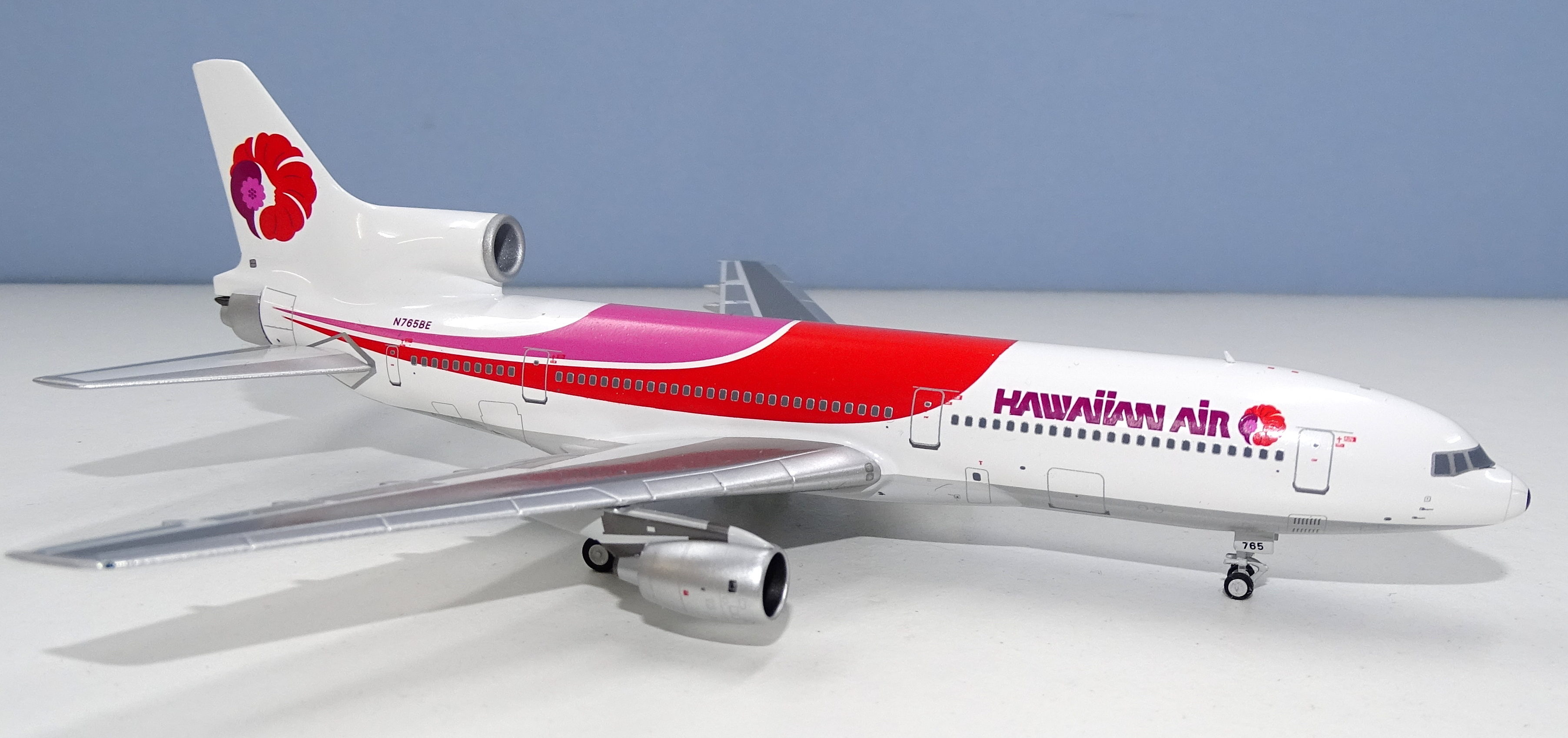


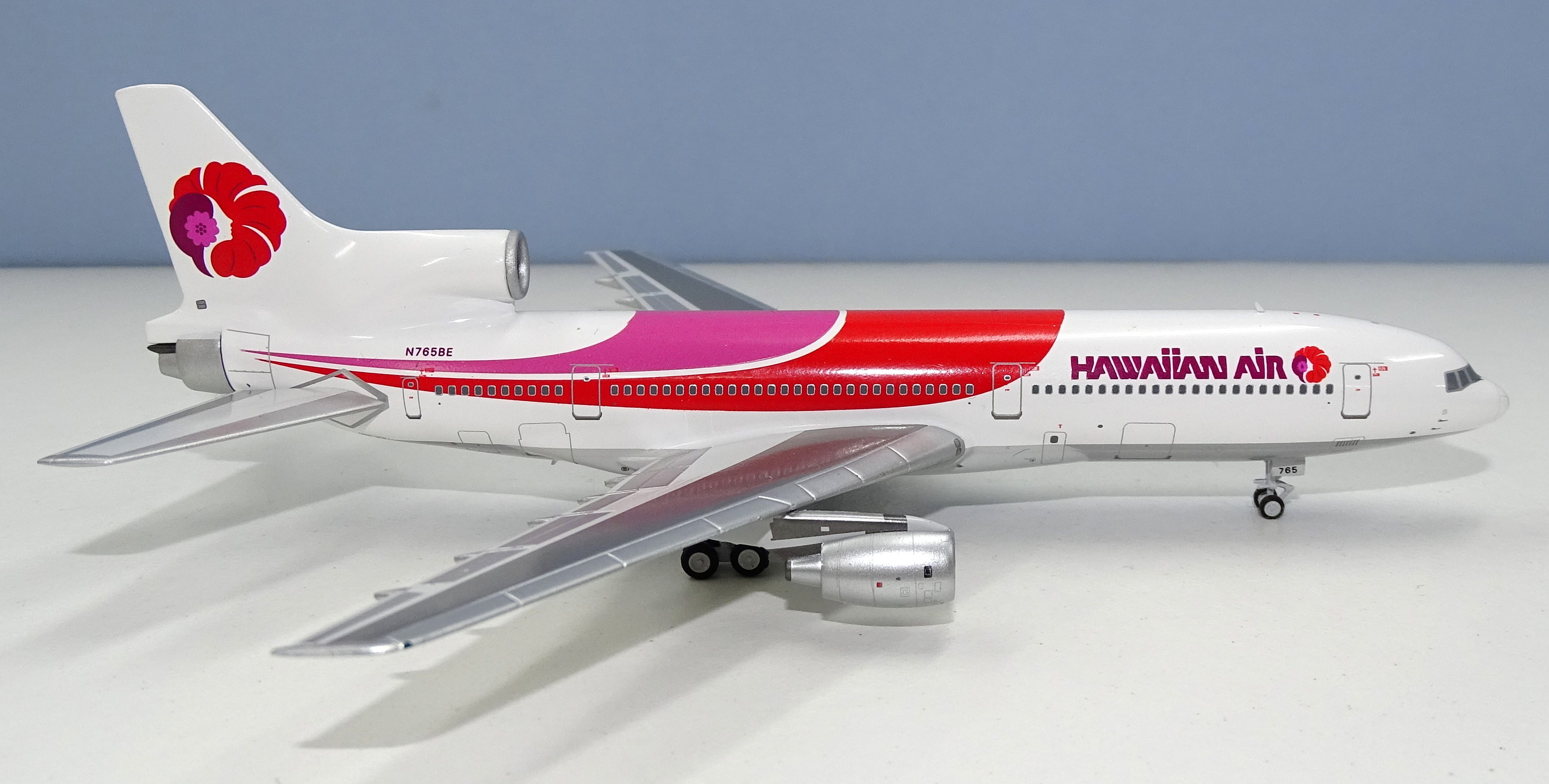
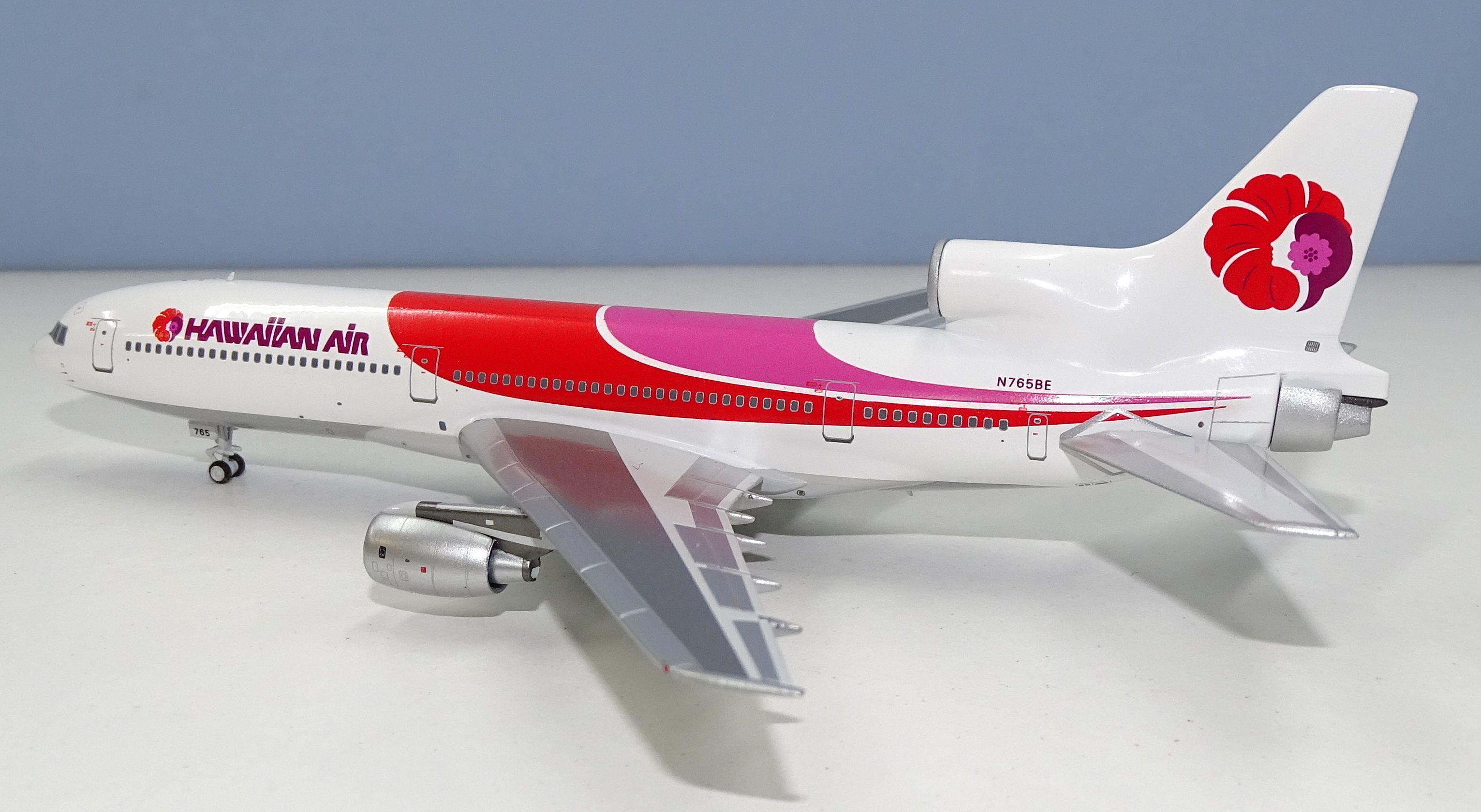
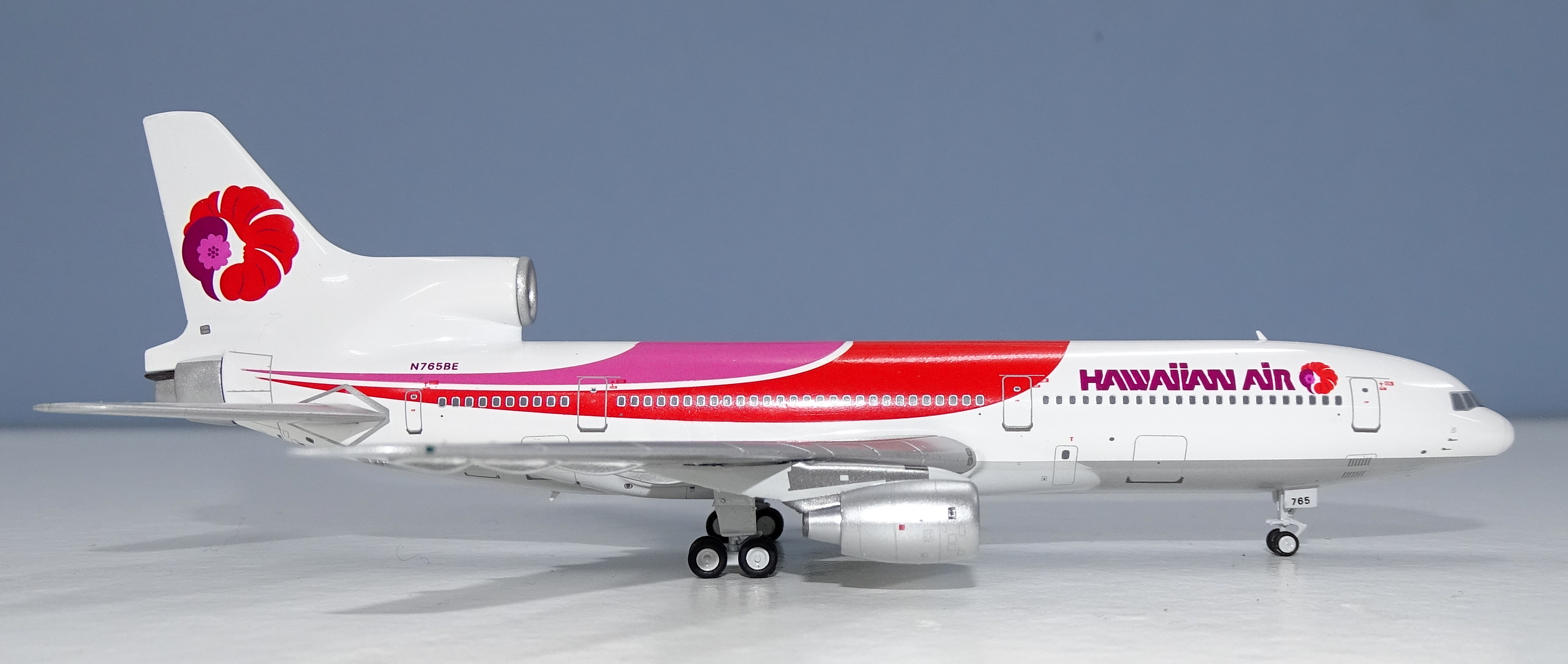
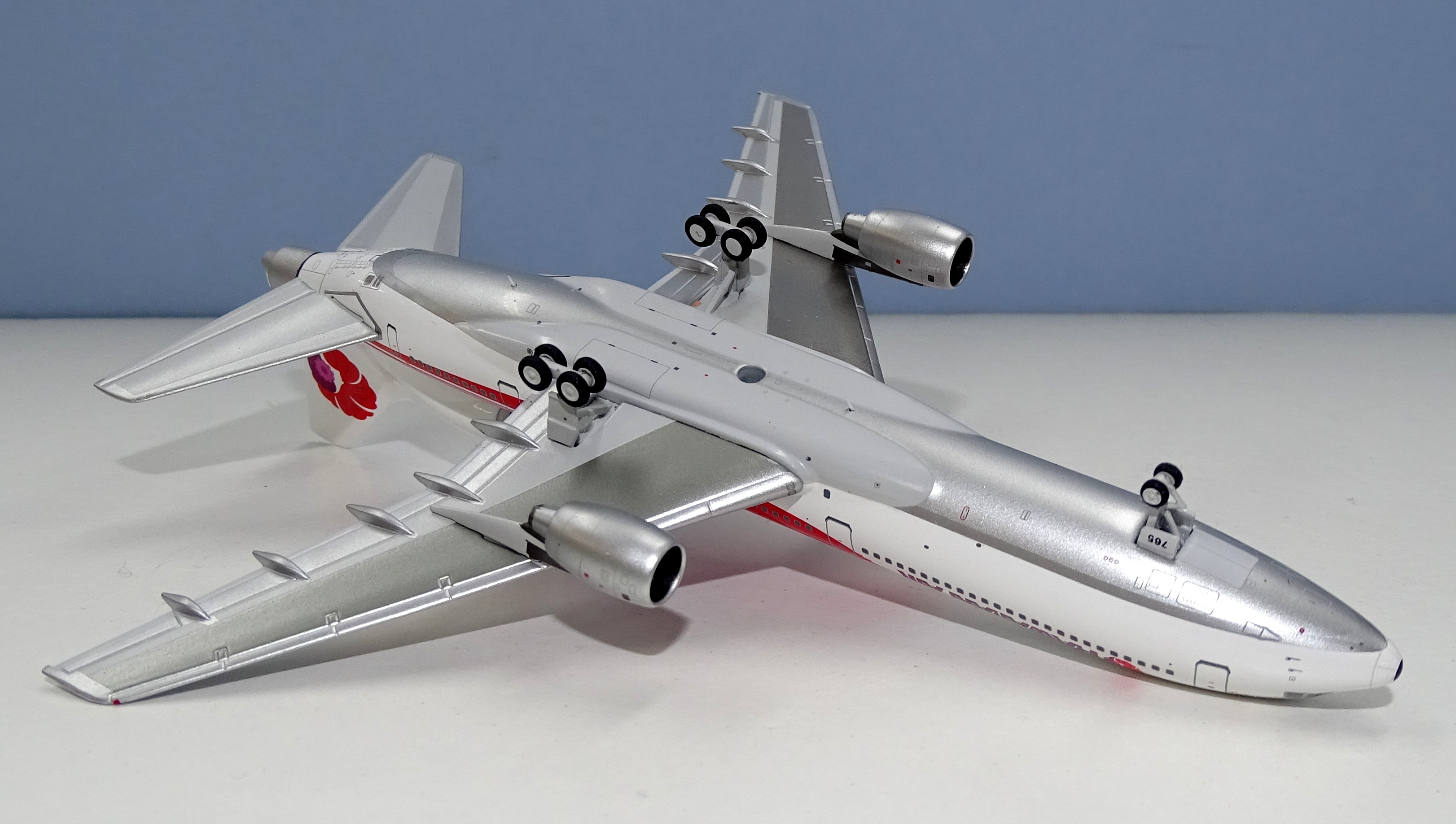

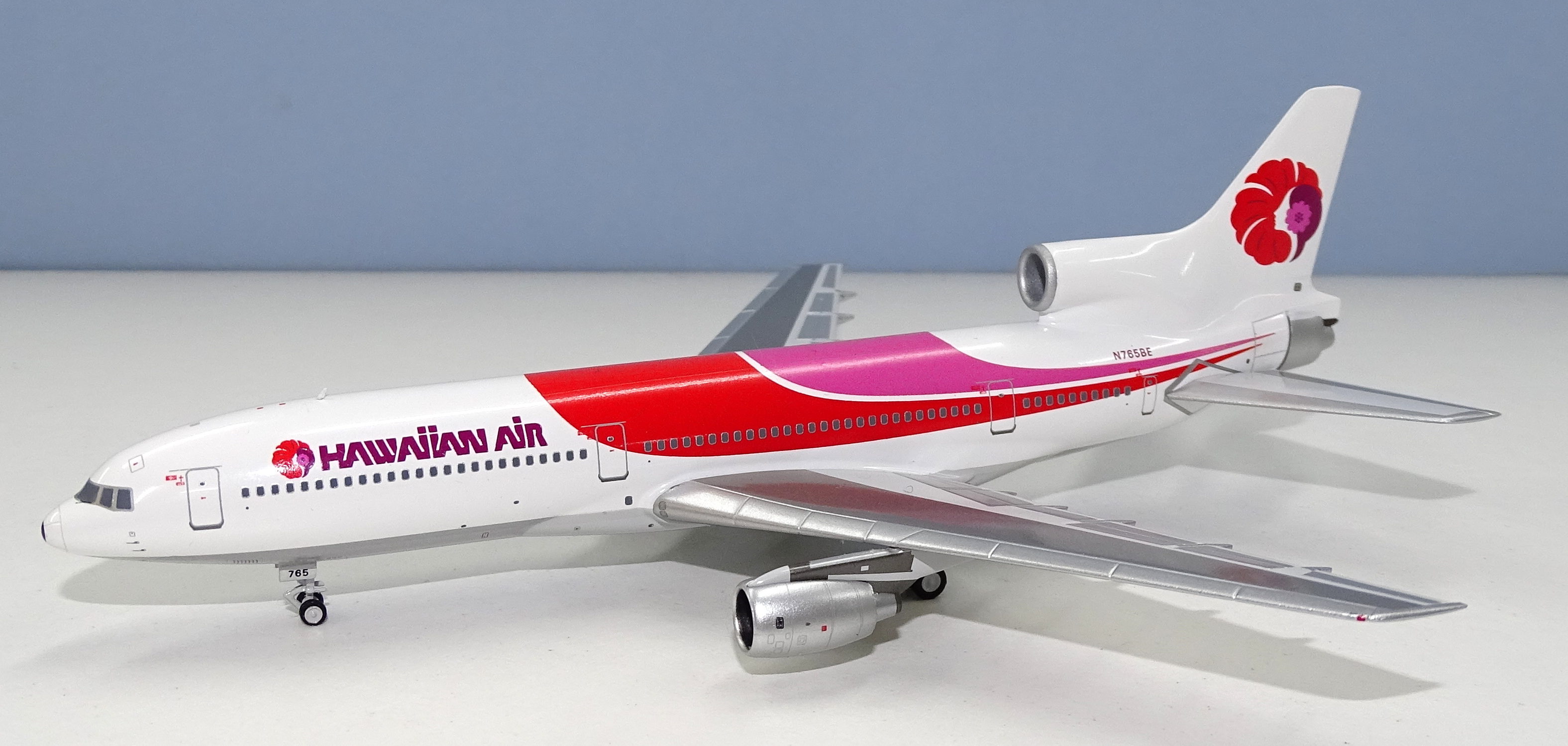

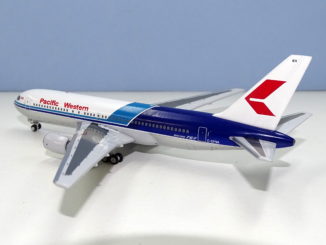
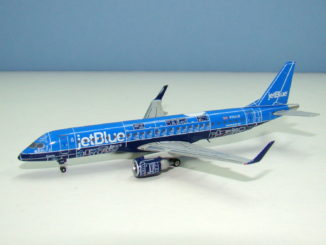
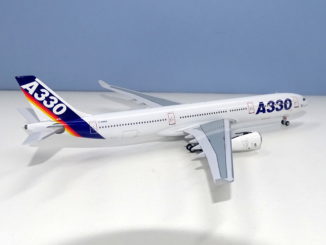
I have the NG British Airways Tristar 500 and very pleased with it. Presume NG have two completely separate moulds for the 100/200 and 500 series or are there compataible parts? Hawaiian isn’t in my collecting criteria, but I am severely tempted by this model!
Three separate moulds – 1 each for the Tristar 1, Tristar 200 and Tristar 500
A more bias and skewed review I have never seen before. I can make out at least 3 areas in which your so-called perfect mould is anything but. I will not say anything though.
Nice comment Jay, very eloquently written.
This is a fantastic mould that deserves such a high score. It can use minor tweaks; the ‘notch’ on the back top of the tail should be a bit smaller, and the tail top a bit flatter. There’s also a very slight ‘slung’ look in the upper middle of the fuselage. All of which are easily corrected.
But if that’s the worst one can find? Wow. I love my NG L-1011’s. Looking forward to seeing the -200 mould Delta.
Jim
My first July 2019 NG Models have arrived. I should note that the slight ‘slung’ look I reported on the first NG L-1011’s has been corrected on the -100 mould, as visible on the LTU model. The -200 mould, used for the first time this month for the Delta, does not have that flaw. (There was no -500 for July, we’ll have to wait to see that mould another time.) NG is clearly paying attention to the quality of their moulds.